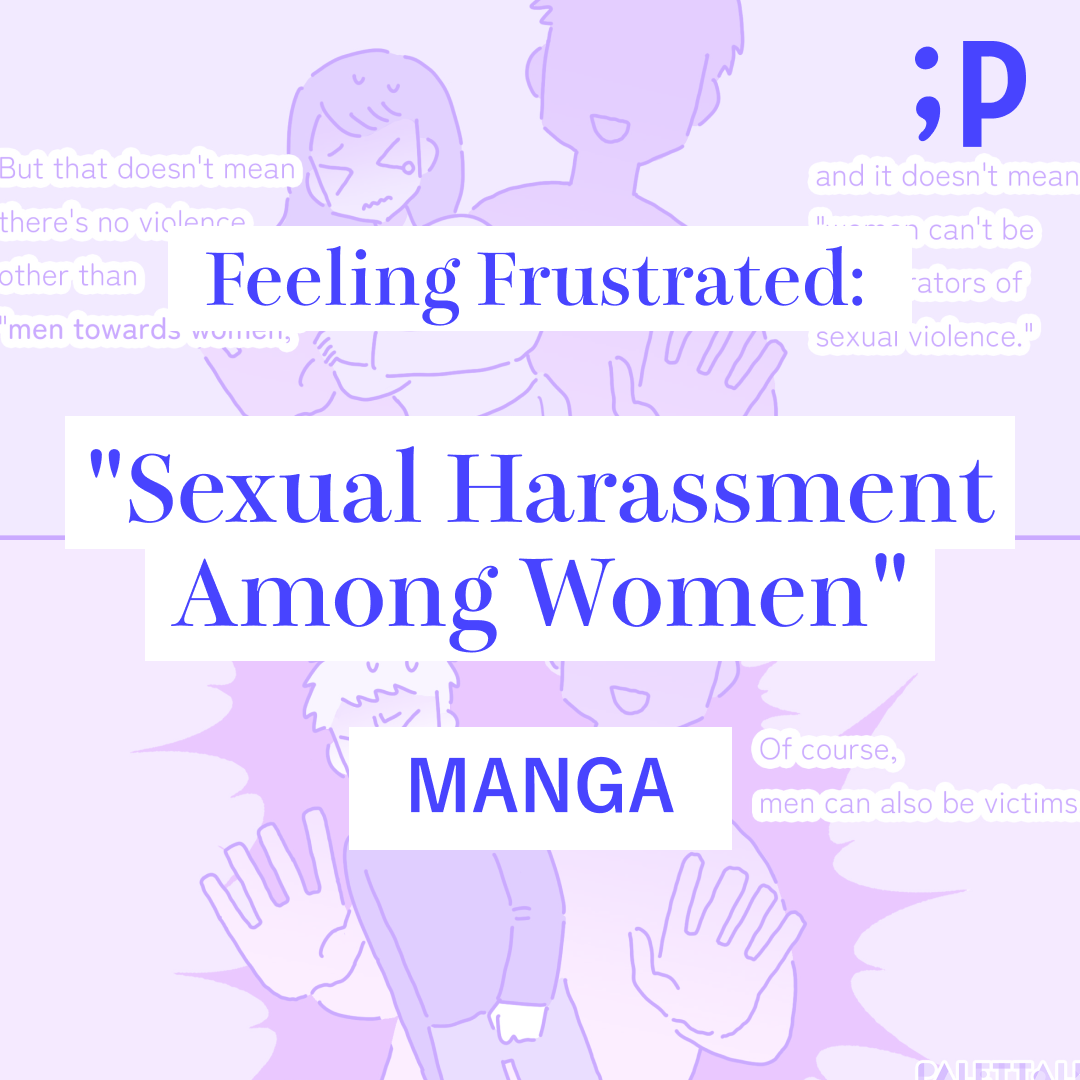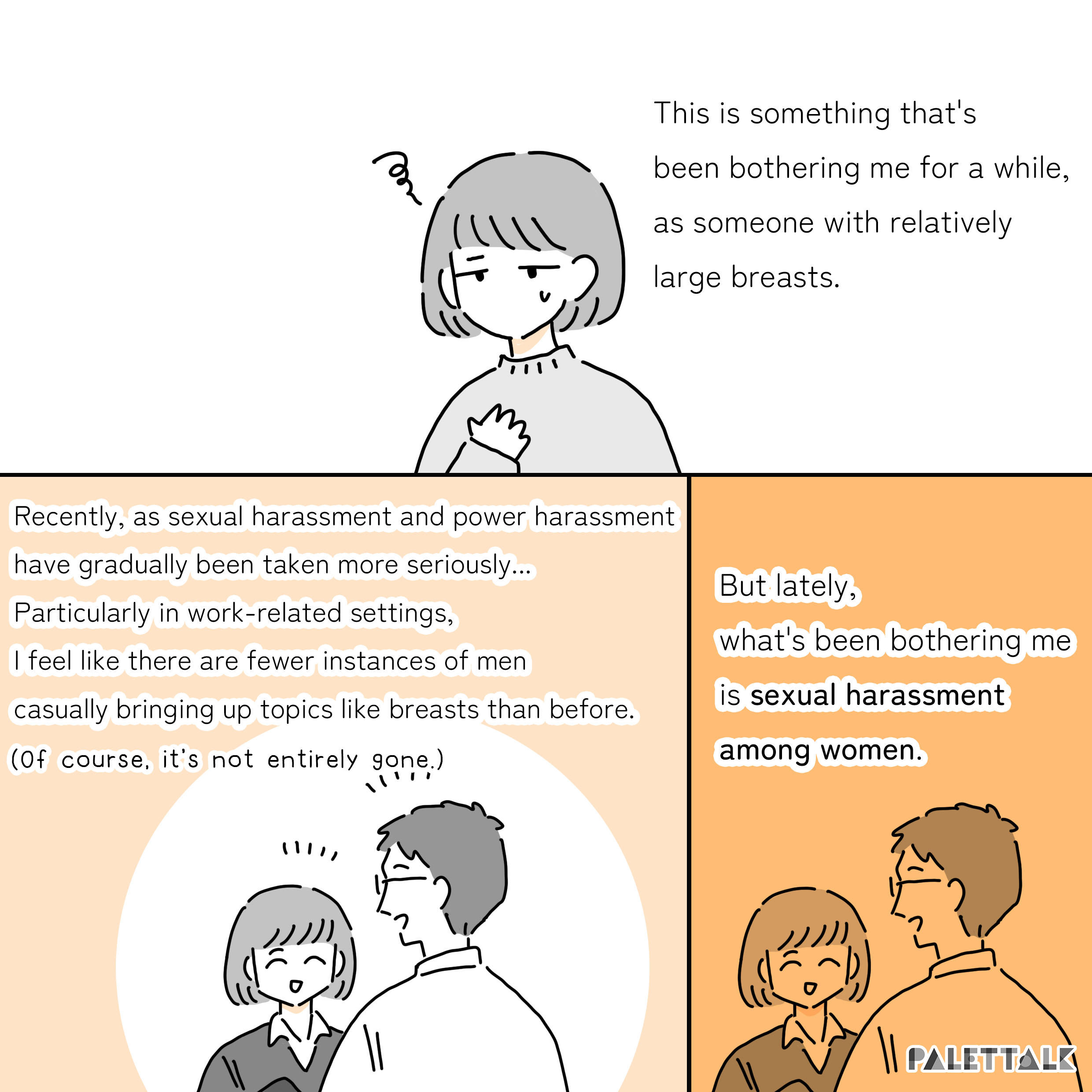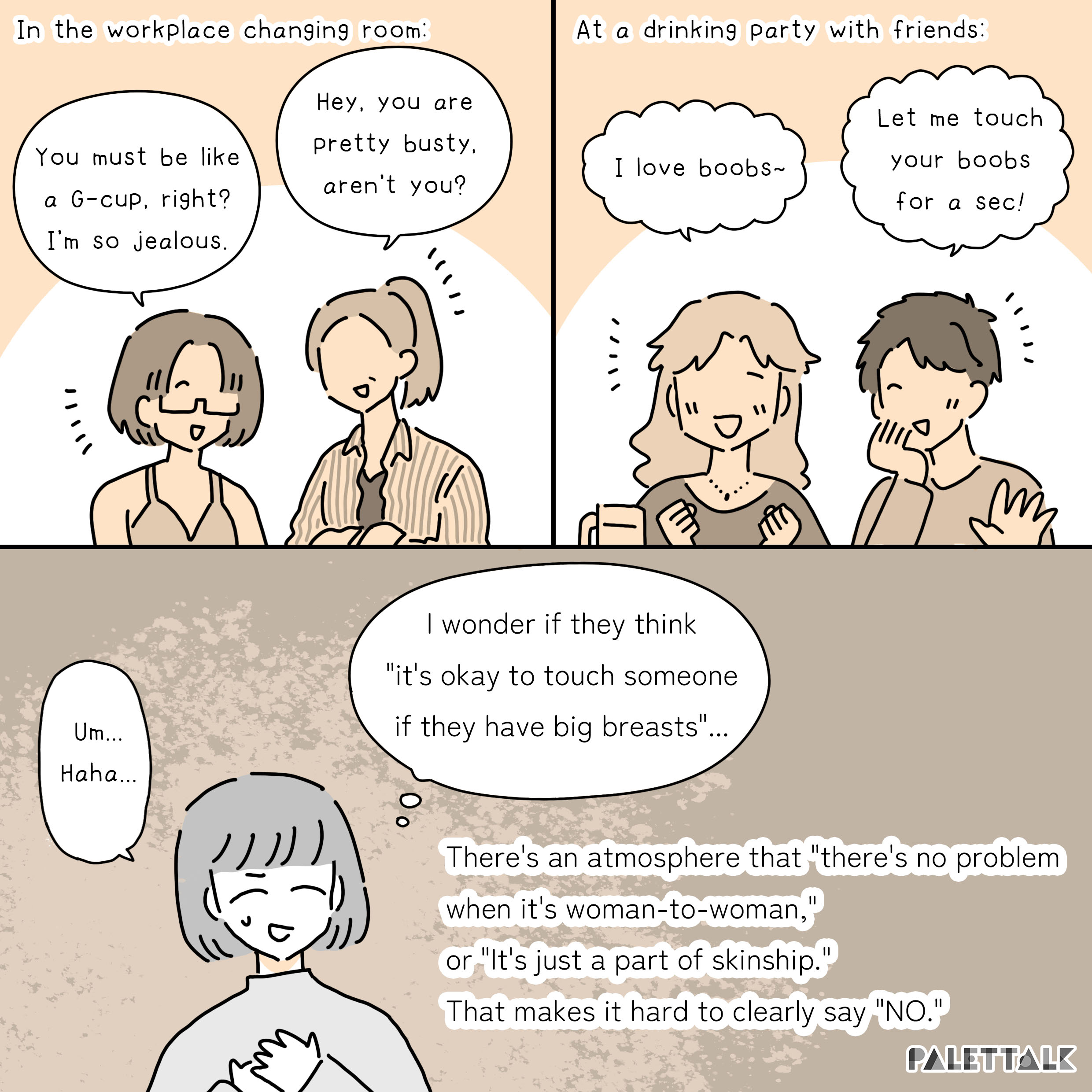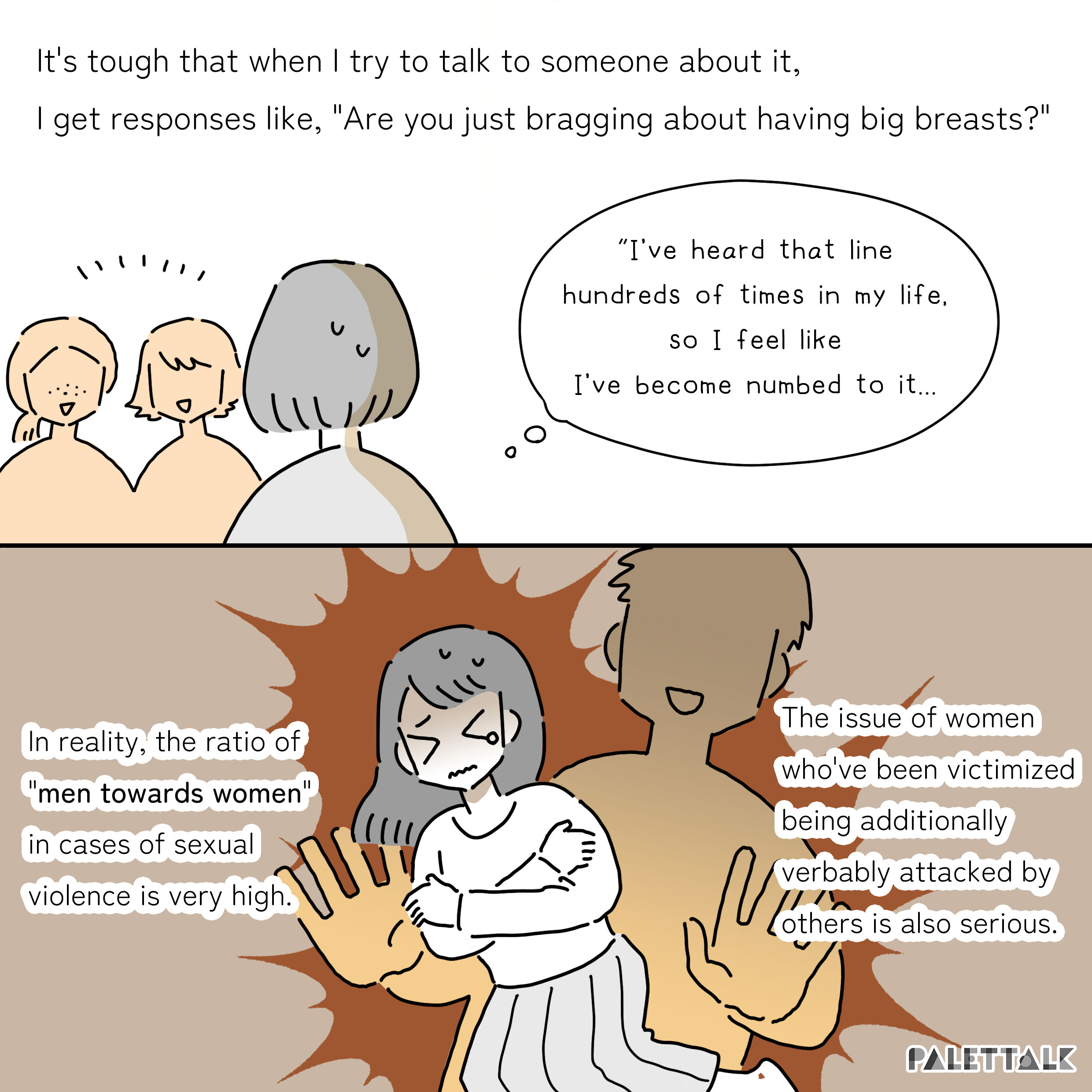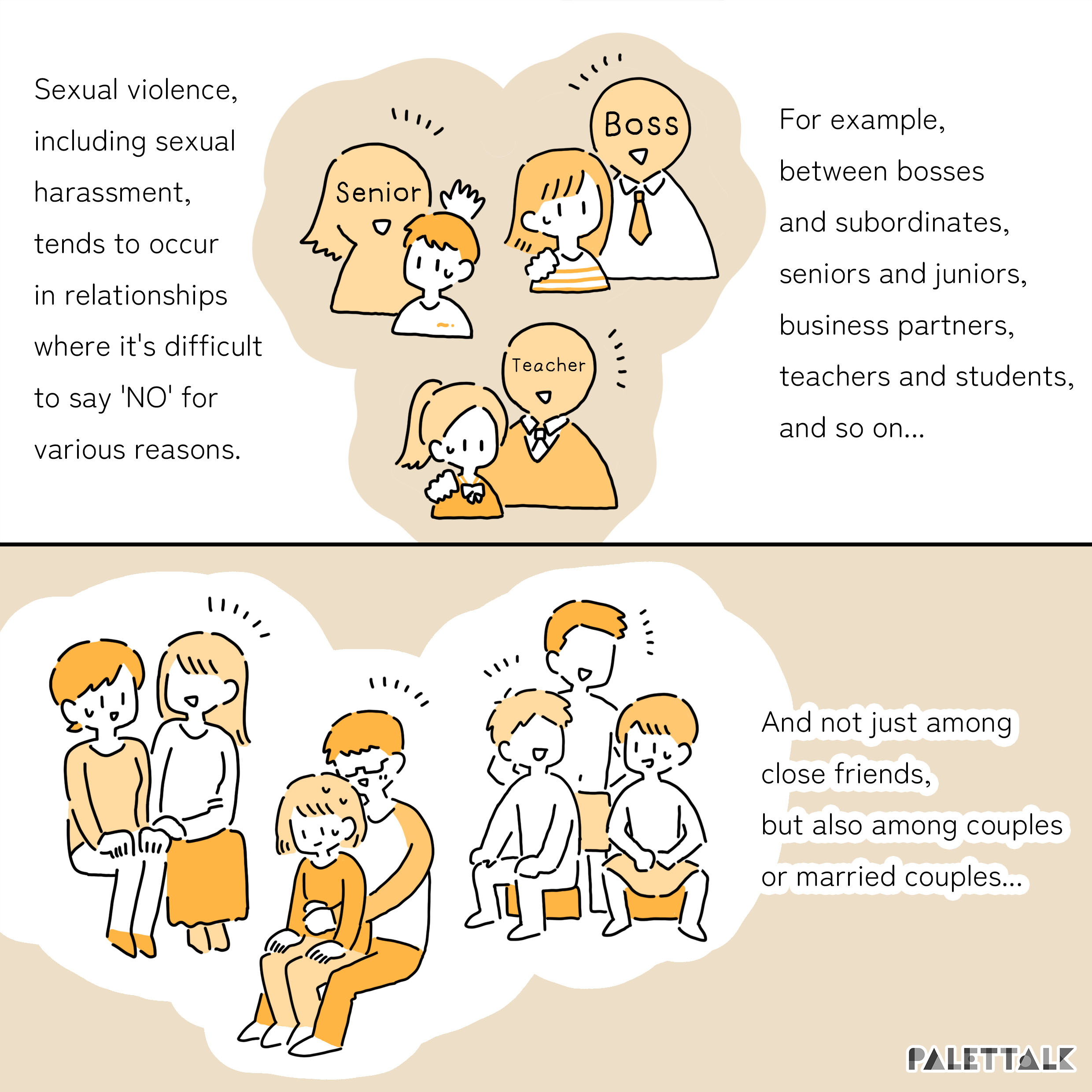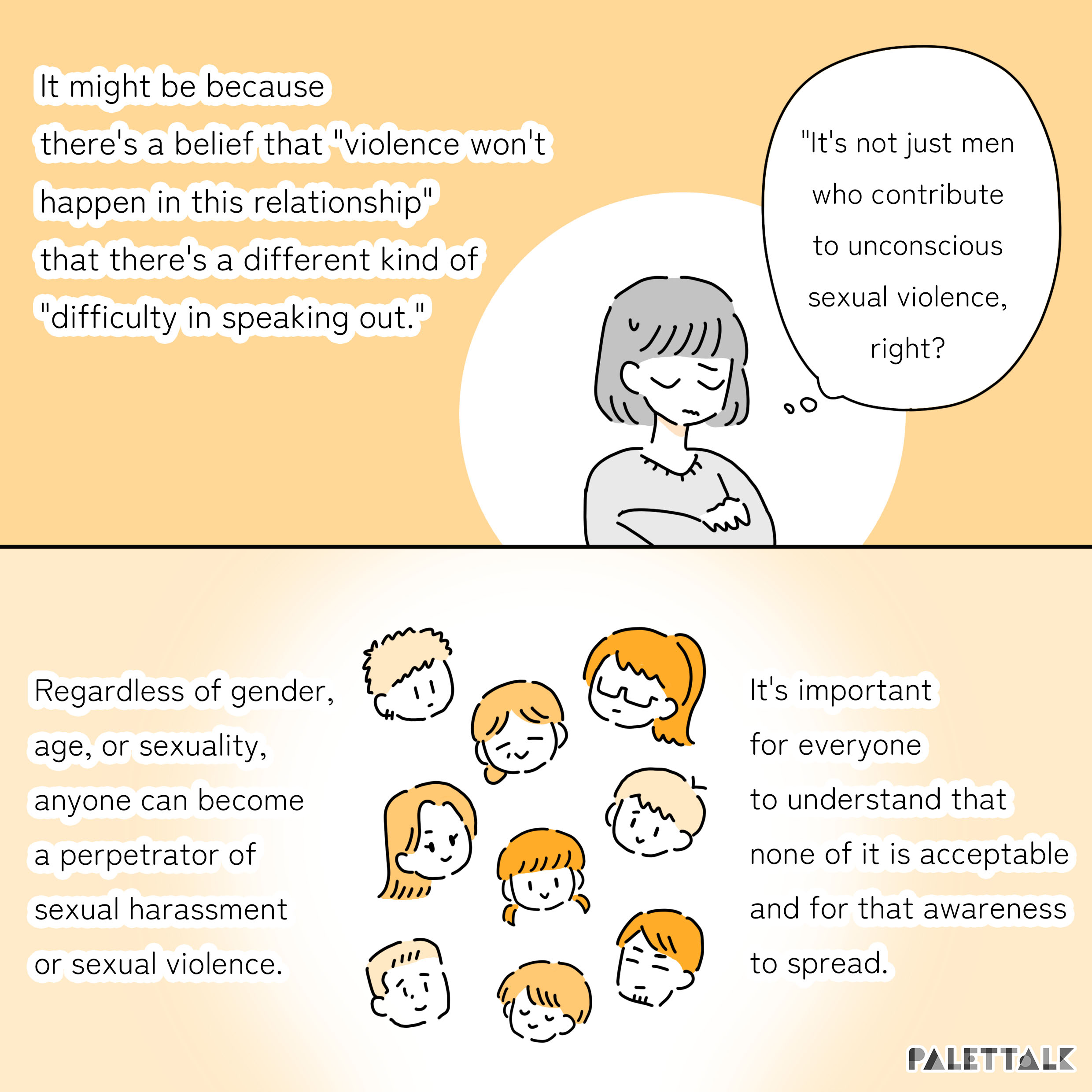【Manga】Feeling Frustrated: “Sexual Harassment Among Women”
In recent years, the term “sexual harassment” has become more widely understood. This has led to the visibility of sexual harm that was previously treated as “just jokes” or “innocent remarks”.
More companies are conducting training sessions on sexual harassment prevention. This is creating an atmosphere where people are more mindful of avoiding sexual harassment, and where individuals who experience harassment feel increasingly comfortable speaking up.
Sexual harassment is one of the serious forms of sexual violence that can deeply wound the dignity and rights of the individuals who experience it.
Now, when you hear the terms “sexual harassment” or “sexual violence,” what kind of perpetrators and victims come to mind?
You might think primarily of cases where men harass women. Indeed, statistically, the majority of perpetrators of sexual harassment and violence are men.
However, the idea that:
“Only men are perpetrators.”
And:
“Only women are victims.”
Is not true.
This time, we’ll take a closer look at common misconceptions, like these, surrounding sexual harassment.
What is Sexual Harassment in the First Place?
Sexual harassment, refers to sexual behaviors or actions that cause shock, discomfort, fear, or humiliation in others.
Sexual harassment includes cases where a person demands sexual contact using a relationship where it is difficult to refuse, or intentionally displaying sexual images in prominent places, as well as other forms of unwanted sexual communication.
In essence, sexual harassment is a form of violence that can occur anytime, anywhere, regardless of gender or relationship dynamics.
Various Factors Contributing to the Difficulty of Speaking Out
There has been increasing recognition of the social ladder within workplaces that make it difficult for victims to speak out against sexual harassment.
“Even though I don’t feel comfortable, I don’t want to mess up the atmosphere…”
“I really don’t like it, but I can’t risk embarrassing this person…”
In situations like these, where individuals may not be directly forced but still feel strongly that they have to accept requests or interactions from superiors. Because these situations were so easily created in the workplace, sexual harassment has become a serious issue that needs to be tackled urgently.
However, sexual harassment is not restricted to the workplace or only between superiors and subordinates.
In fact, misconceptions such as “sexual harassment wouldn’t occur in this type of relationship” can make it difficult for victims to recognize the harassment they experience or receive understanding from those around them when they do speak up. This creates situations where speaking out still remains challenging.
① Instances of Harassment from Individuals of the Same Gender
Firstly, as illustrated in the manga, sexual harassment from people of the same gender can be challenging to recognize as harmful behavior.
Unwanted comments about one’s body or physical contact without permission, even between people of the same gender, are examples of serious sexual harassment.
However, in the case of same-gender contacts, particularly among women, that are very close, are often thought of as “normal” in Japanese society, making it hard to tell the difference between expressions of familiarity and harm.
② Instances of Harassment from Family Members
Similarly, sexual harassment involving family members or relatives often gets treated as “expressions of closeness.”
Demands for breastfeeding in front of relatives, detailed personal questions about menstruation or pregnancy, or comments like, “Now that you have a daughter, you just need a son next,” might have been brushed off in the past. But, there is no doubt that they are examples of sexual harassment.
Harassment occurring within such supposedly close relationships is difficult to recognize as harmful, and the pressure of thinking ”I don’t want to make a fuss because I am still in a family relationship” can silence victims.
③ Instances of Harassment Experienced by Men or Older Individuals
In addition to the difficulty of noticing harassment within close relationships, victims who hold positions that do not seem likely to be victimized often find their experiences not recognized by society.
The term “reverse sexual harassment” is often used to describe instances where men experience harassment. This indicates a widespread belief that sexual harassment is something that only happens from men to women.
However, as mentioned earlier, sexual harassment can happen to anyone, regardless of gender.
This misconception creates an environment where male victims can feel uncomfortable seeking help. They often already are facing pressure from society that, “being a victim is shameful.”
Furthermore, the belief that “harassment is typically committed by those in positions of authority against those beneath them” is commonly held. However, it is very important to recognize that the opposite can also occur.
For instance, while cases of serious harassment by professors against students in universities have come to light, there have also been reports of students making sexually teasing comments or submitting erotic remarks about female faculty members on evaluation sheets.
As we have seen so far, it is essential to understand that anyone can be either a perpetrator or a victim of sexual harassment.
When trying to grasp the full picture of a situation, we tend to rely on numbers, and we often consider rare cases as exceptions.
Of course, by understanding these broad trends, we can focus on relationships where sexual harassment is more likely to occur and create useful ways to tackle them.
However, we must not forget that those who have experienced harassment are not just numbers; each person has their own unique experience.
By making it clear that the ideas that have been widely believed, like, “Sexual violence would not happen in this type of relationship,” or, “This person could not possibly be a perpetrator/victim,” more people can recognize cases of harassment when they happen. Then, they can receive the support they need. In this way, fewer individuals who need help would miss out.
Conclusion
As awareness about sexual harassment has grown, more people are making efforts to avoid actions that could be thought of as harassment.
However, you may have heard expressions of frustration in such situations like:
“We’re living in an era where anything you say can get you in trouble,” or
“Everything is labeled as discrimination or harassment nowadays,” or
“We’re in an era where you can’t say anything.” etc.
Those who have been called out for sexual harassment may feel unfairly criticized, especially if they did not intend harm. This can be said about microaggressions as well.
Those who take the point of view suggesting that “‘people who just want to attack someone’ slap labels like ‘sexual harassment’ or ‘microaggression’ onto behaviors that used to be considered normal, and patrol social media to feel good by showing their own sense of justice,” can continue to ignore the seriousness of the harm caused by such actions.
However, sexual harassment and microaggressions are not “fabrications to attack people” or something that “just started recently.” They have always existed in society, even though they were not named.
Statements like “Nobody had a problem with this before,” or “Everybody used to enjoy it,” overlook the fact that many individuals were silenced or ignored when they tried to speak up about such behavior.
Many people feel like “no matter what they say, they’ll be criticized,” which can be seen as a reflection of the fact that behaviors that ignore the individuality, personality, or rights of others were considered “normal” and were unquestioningly overlooked.
In order to change this trend, it would be beneficial if more people could take a moment to reflect on why they might be criticized for words they thoughtlessly said, even if they didn’t mean any harm.
(Translation: Jennifer Martin)

